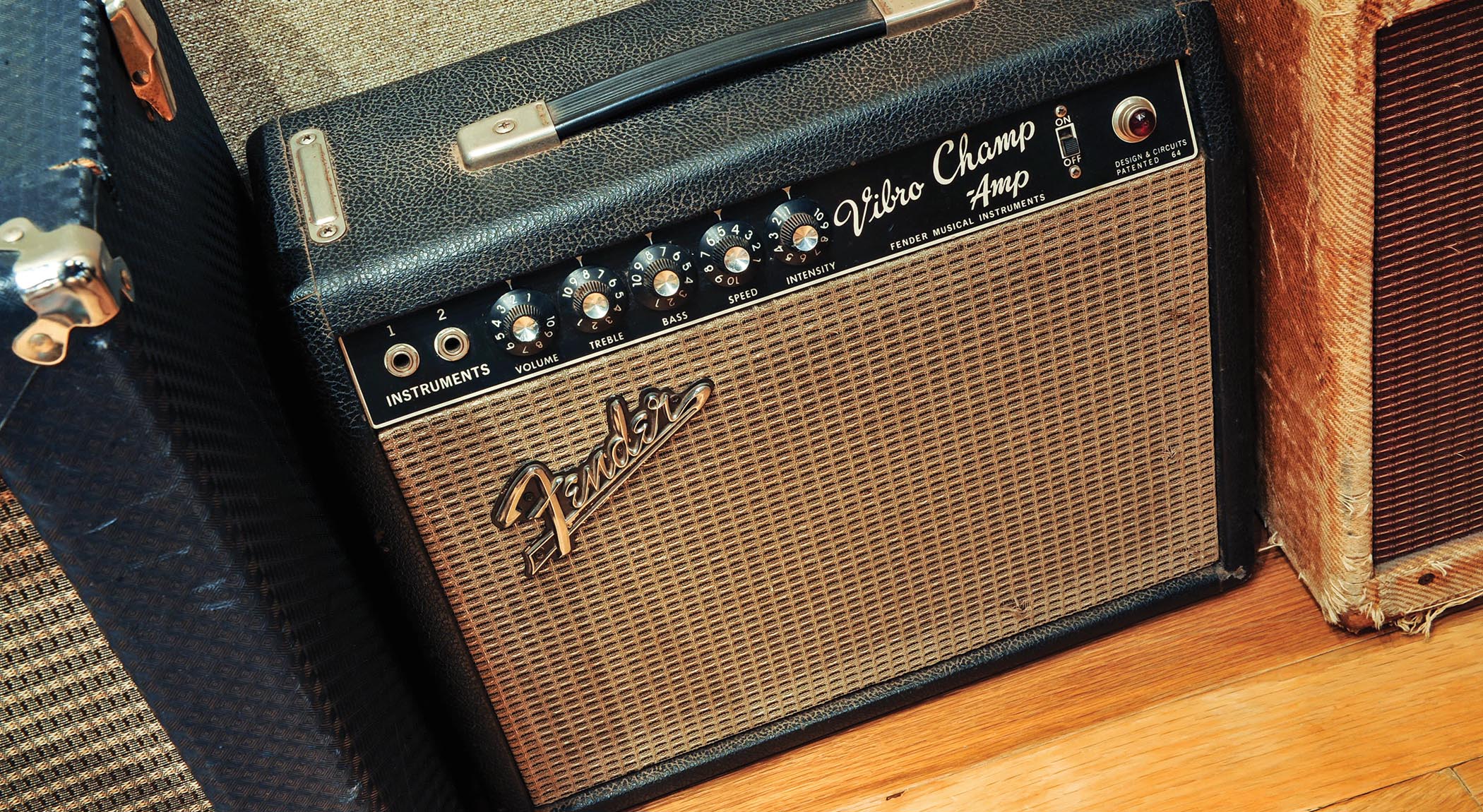“The tone fattens up as the amp is pushed into overdrive, and fully cranked up it pumps out deliciously gritty crunch”: In praise of the Champ, Bronco and Vibro Champ – how Fender’s compact tube amps became MVPs in the studio
Countless classic recordings have been blessed with the hot tube mojo of a 1964 black-panel Fender Champ and its descendants, and it’s a sound that remains a studio superpower to this day

Almost every internet forum discussion of classic late-’60s and ’70s-era recordings where an artist vaguely cites using a “Fender Champ” will result in some belligerent blowhard insisting that it was a tweed Champ.
Sometimes this is correct, but more often than not the Fender amp in question was more likely a black-panel/silver-panel Champ or Vibro-Champ from the mid-’60s onwards.
The main reason is pretty simple: black-panel and silver-panel Champ family amps were commonplace new products during those eras. Studios bought them because they were inexpensive, highly useful, reliable tools, and guitarists picked them up for backstage warmups or hotel practice.
The other reason is that, while a tweed Champ can sound pretty damn good, it’s mainly ideal for raunchy overdrive tones with honking mids, albeit also with sloppy-sounding bass and noticeable rectifier sag.
The later black-panel and silver-panel Champ AA764/AB764 circuit delivers a much wider range of useful tones with increased clean headroom, tighter response and bass that retains definition and punch even when the amp is pushed to its full extremes of overdrive.
In short, Champ and Vibro-Champ amps produced during the mid-’60s onwards are simply better-sounding and more tonally versatile tools, especially for studio recording.
The black-panel Champ produced from 1964 through 1967 is essentially identical to the silver-panel version offered from 1968 until 1982, with only a few minor component changes and a switch in transformer brand/model that frankly doesn’t make a significant difference in the amp’s overall character.
Get The Pick Newsletter
All the latest guitar news, interviews, lessons, reviews, deals and more, direct to your inbox!
It features a dead-simple set of controls (Volume, Treble and Bass), high- and low-level inputs, a 4-ohm 8-inch speaker (usually an Oxford 8EV, but sometimes a Jensen speaker was used), and 5Y3 rectifier, 6V6 power and 12AX7 preamp tubes. The Vibro Champ adds an awesome-sounding bias vary tremolo circuit driven by an additional 12AX7 and featuring Speed and Intensity controls.
Many players consider it their favorite in-amp tremolo effect thanks to its deep, rich “helicopters over Hanoi” pulsations. Fender also offered the Bronco amp from very late 1967 until 1980, which was identical to the Vibro-Champ with the exception of its name painted in red.
These Champ/Vibro-Champ/Bronco amps deliver classic Fender black-panel clean tones ideal for country or really any time you want pristine clean tones with percussive snap, sparkly high-end and round, bouncy bass. The tone fattens up as the amp is pushed into overdrive, and fully cranked up it pumps out deliciously gritty crunch.
These amps pair very well with pedals, and thanks to their small size, they’re also very fun to experiment with in the studio by placing them in unusual environments like closets, cardboard boxes or metal garbage cans.
These tube amps also work well with external speaker cabinets, but be absolutely certain to use only a 4-ohm cab as extended use of an 8- or 16-ohm cab runs the risk of blowing up the transformer.
Black-panel and silver-panel Champ and Vibro-Champ amps have been used on way too many recordings to list here. Perhaps the most famous example is Funk #49, where Joe Walsh used only a Telecaster plugged into a black-panel Vibro-Champ. Other more recent Champ fans include Jim Campilongo, Mike McCready, Derek Trucks and Jack White.
Chris is the co-author of Eruption - Conversations with Eddie Van Halen. He is a 40-year music industry veteran who started at Boardwalk Entertainment (Joan Jett, Night Ranger) and Roland US before becoming a guitar journalist in 1991. He has interviewed more than 600 artists, written more than 1,400 product reviews and contributed to Jeff Beck’s Beck 01: Hot Rods and Rock & Roll and Eric Clapton’s Six String Stories.
You must confirm your public display name before commenting
Please logout and then login again, you will then be prompted to enter your display name.




![[from left] George Harrison with his Gretsch Country Gentleman, Norman Harris of Norman's Rare Guitars holds a gold-top Les Paul, John Fogerty with his legendary 1969 Rickenbacker](https://cdn.mos.cms.futurecdn.net/TuH3nuhn9etqjdn5sy4ntW.jpg)






